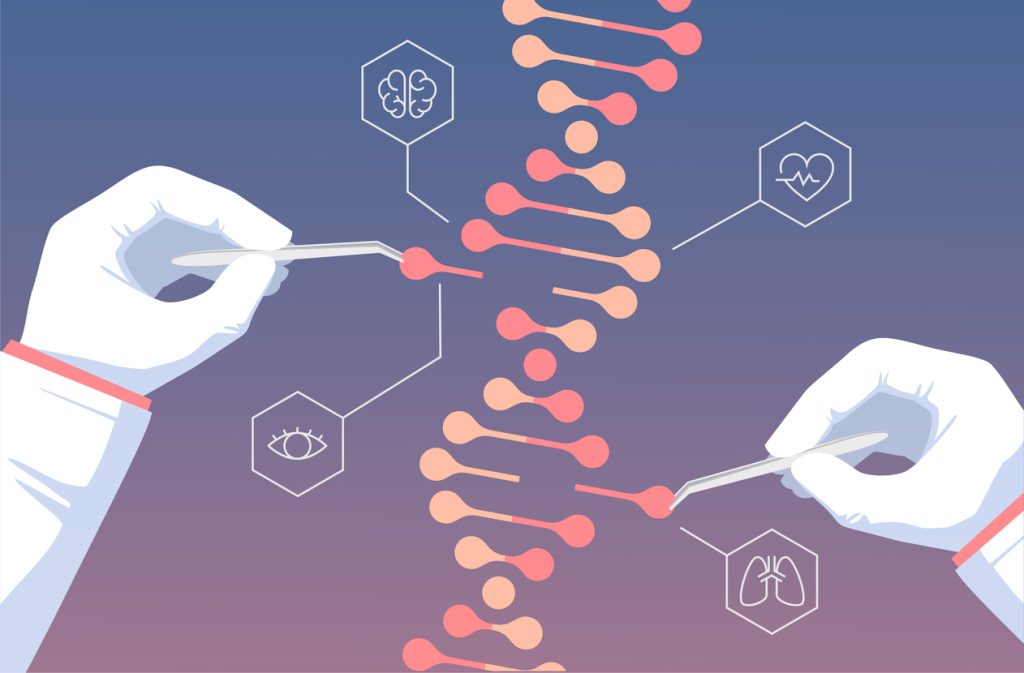Introduction
Born out of the year 2012, CRISPR gene-editing technology burgeoned into one of life science’s most captivating breakthroughs of the 21st century. By 2020, the Nobel Prize validated CRISPR’s prominence, and as of December 2023, the US FDA heralded a new era with the approval of the first CRISPR-based gene therapy for Sickle Cell Disease (SCD). This regulatory milestone illuminates CRISPR’s tangible impact on challenging patient afflictions.
The Evolution and Expansion of CRISPR Research
An array of CRISPR-related research, mounting into thousands of publications annually, signifies constant growth within this domain. Innovations such as transposases, Fanzor, and epigenome editing have diversified the CRISPR toolbox. Concurrently, strides in delivery mechanisms, evidenced by developments in LNPs and VLPs, and the discovery of miniaturized CRISPR systems, have catalyzed in vivo gene-editing endeavors. Promising preclinical and clinical research tirelessly showcases the vast potential of CRISPR in various disease contexts.
The Zodiac of CRISPR Development
In February 2024, researchers from the University of Zurich unveiled a comprehensive review in Cell, titling it “Past, present, and future of CRISPR genome editing technologies.” The article pontificates on the transformative influence of genome editing in life sciences and human medicine, offering unparalleled insights into complex biological proceedings and in fundamentally confronting genetic disorders. CRISPR, esteemed for its efficiency and programmability, stands at the revolution’s vanguard.
The Current State and Future Horizons
Dissecting the present landscape, the review discusses the current state of CRISPR gene editing in research and therapy. It accentuates existing barriers while nimbly unpacking recent technical innovations developed to circumnavigate these impediments. Furthermore, the article provides a meticulous summary of genomic editing’s incumbent applications in human health and therapy.

The Mechanisms of CRISPR Genome Editing
CRISPR-Cas nucleases wield programmability to generate site-specific DNA double-strand breaks, bolstering their adaptability for genomic editing. The venerable SpCas9 from Streptococcus pyogenes, marked by its inherent activity and specificity, continues to be a predominant gene editor. Following SpCas9, Cas12a—derived from the Type V CRISPR-Cas system—emerged with distinguishing features like tracerRNA independence, which has been capitalized on for multiplexed in vivo editing.
Advancements and Limitations
Since CRISPR’s debut, there has been an evolution of first-generation DNA double-strand break-dependent editors, such as Cas9 and Cas12a nucleases. Enhanced through innovation, these tools have gained multifunctionality and precision, mitigating unintended editing outcomes. With concerns surrounding their safety persisting—stemming both from off-target activity and the genotoxic potential of targeting DNA double-strand breaks—various methods have been explored to precisely govern CRISPR genome editors.
Next-Generation CRISPR Technologies
Fears over genotoxicity and the efficiency handicap of Homology-Directed Repair (HDR) have spearheaded development of “second-generation” CRISPR technologies that mediate genome editing without DNA breaks or reliance on HDR. Exemplars such as base editors (BEs) and prime editors (PEs) lead this vanguard.
The Contemporary CRISPR Toolbox
The repertoire of CRISPR genome editing now spans diverse methodologies, including CRISPR-Cas9, CRISPR-Cas12a, base editing, prime editing, transcriptional regulation, and RNA editing. These specialized refinement tools lend precision to genome editing strategies, targeting specific edit types or delivery modes.
CRISPR Genome Editing Applications for Human Health
CRISPR’s ascension has reshaped genetic research paradigms and has been pivotal in amassing molecular diagnostics that are specific, rapid, and sensitive for detecting viral DNA or RNA. Moreover, strategies to obliterate viral or bacterial human pathogens have burgeoned; an exemplar being CRISPR-driven gene drives aimed at decimating insect populations marauding as vectors of maladies like malaria.

Looking Forward
As the past decade’s progress has illustrated the field’s kinetic advancement, novel third-generation tools and technologies are emerging. These span the gamut of compact RNA-guided nucleases to CRISPR-guided recombinases and transposases, earmarked for DNA insertions and RNA editing. Furthermore, the creation of new genomic editing tools marches in lockstep with evolving delivery methods—a formidable hurdle for therapeutic applications.
Ethical and Social Considerations
The ethical and societal implications, especially the provocative subject of human germline genome modification, continue to ignite front-burner discussions within the gene-editing discourse. Even as somatic cell editing crystallizes into reality, the therapeutic and non-therapeutic prospects of germline editing, along with the capacity for heritable human genomic alterations, raise profound ethical queries that global societies must reconcile. Given the early echoes from human embryonic studies, it is evident that CRISPR gene editing technologies are not currently secure or effective enough for reproductive purposes. However, the urgent call for international consensus on the governance and responsible stewardship of gene-editing technologies cannot be overstated, particularly in the face of rapid evolution, refinement, and broad adoption.
Conclusion
Despite the challenges outlined, the horizon of CRISPR gene editing burgeons with promise. It is poised not only to propel groundbreaking research and revolutionize human medicine but also to heighten agricultural production and confront climatic and ecological challenges—thus building a healthier, more sustainable future for generations to come.


















































Discussion about this post